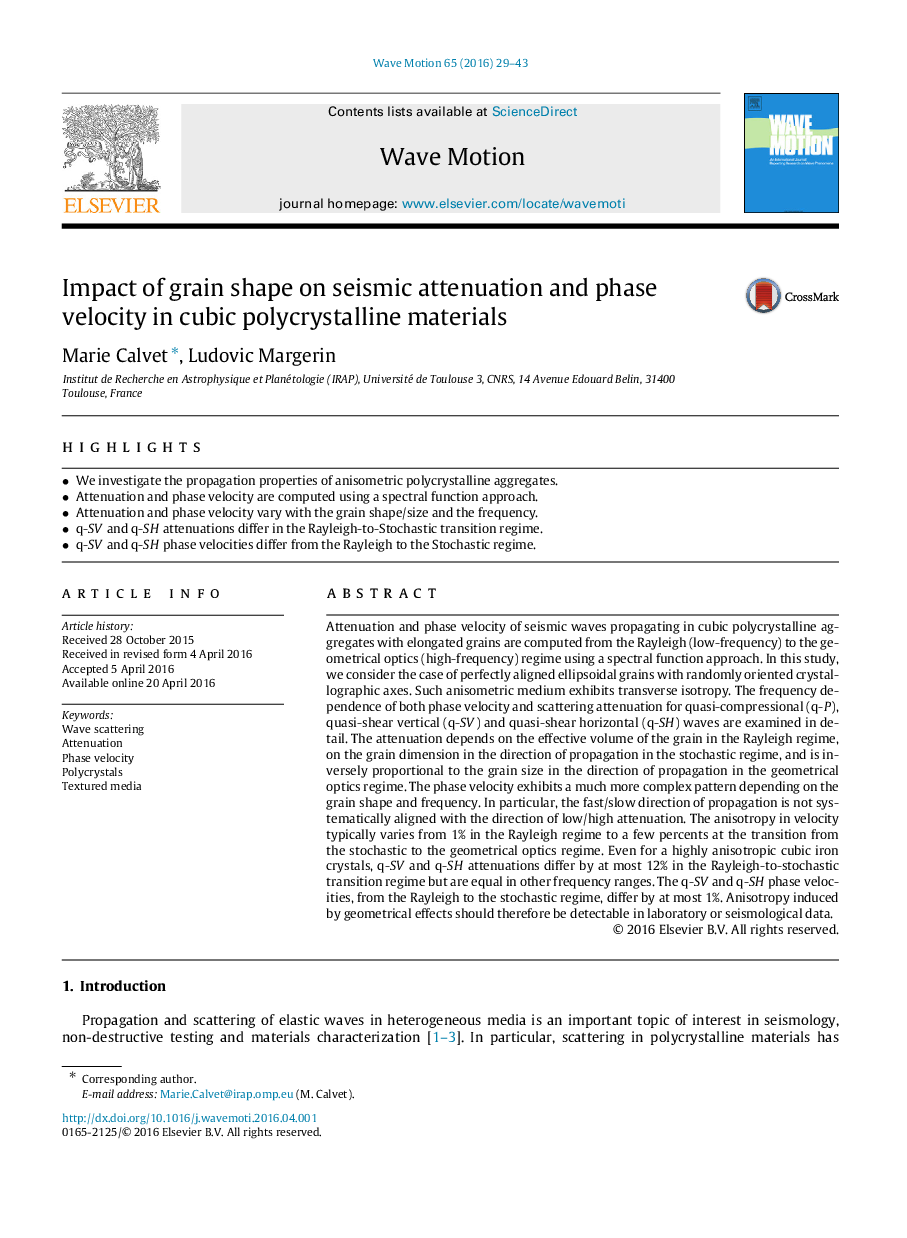| کد مقاله | کد نشریه | سال انتشار | مقاله انگلیسی | نسخه تمام متن |
|---|---|---|---|---|
| 1900019 | 1534266 | 2016 | 15 صفحه PDF | دانلود رایگان |
• We investigate the propagation properties of anisometric polycrystalline aggregates.
• Attenuation and phase velocity are computed using a spectral function approach.
• Attenuation and phase velocity vary with the grain shape/size and the frequency.
• q-SVSV and q-SHSH attenuations differ in the Rayleigh-to-Stochastic transition regime.
• q-SVSV and q-SHSH phase velocities differ from the Rayleigh to the Stochastic regime.
Attenuation and phase velocity of seismic waves propagating in cubic polycrystalline aggregates with elongated grains are computed from the Rayleigh (low-frequency) to the geometrical optics (high-frequency) regime using a spectral function approach. In this study, we consider the case of perfectly aligned ellipsoidal grains with randomly oriented crystallographic axes. Such anisometric medium exhibits transverse isotropy. The frequency dependence of both phase velocity and scattering attenuation for quasi-compressional (q-PP), quasi-shear vertical (q-SVSV) and quasi-shear horizontal (q-SHSH) waves are examined in detail. The attenuation depends on the effective volume of the grain in the Rayleigh regime, on the grain dimension in the direction of propagation in the stochastic regime, and is inversely proportional to the grain size in the direction of propagation in the geometrical optics regime. The phase velocity exhibits a much more complex pattern depending on the grain shape and frequency. In particular, the fast/slow direction of propagation is not systematically aligned with the direction of low/high attenuation. The anisotropy in velocity typically varies from 1% in the Rayleigh regime to a few percents at the transition from the stochastic to the geometrical optics regime. Even for a highly anisotropic cubic iron crystals, q-SVSV and q-SHSH attenuations differ by at most 12% in the Rayleigh-to-stochastic transition regime but are equal in other frequency ranges. The q-SVSV and q-SHSH phase velocities, from the Rayleigh to the stochastic regime, differ by at most 1%. Anisotropy induced by geometrical effects should therefore be detectable in laboratory or seismological data.
Journal: Wave Motion - Volume 65, September 2016, Pages 29–43
